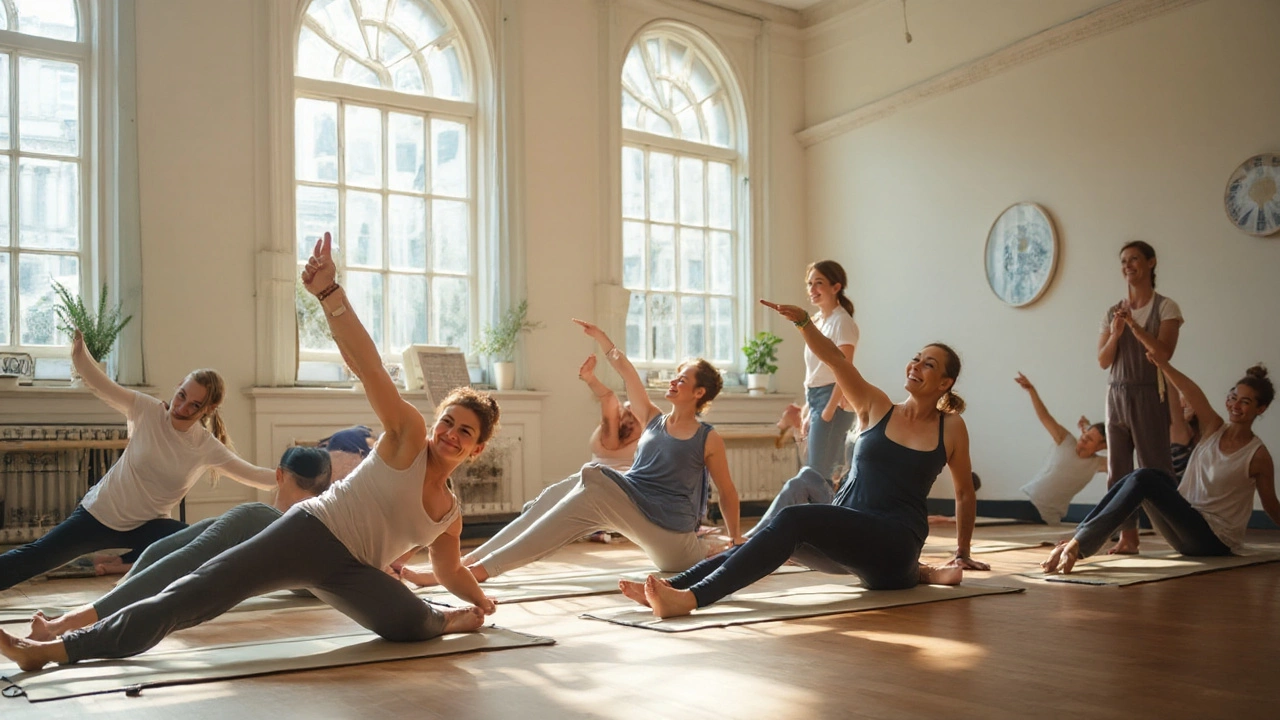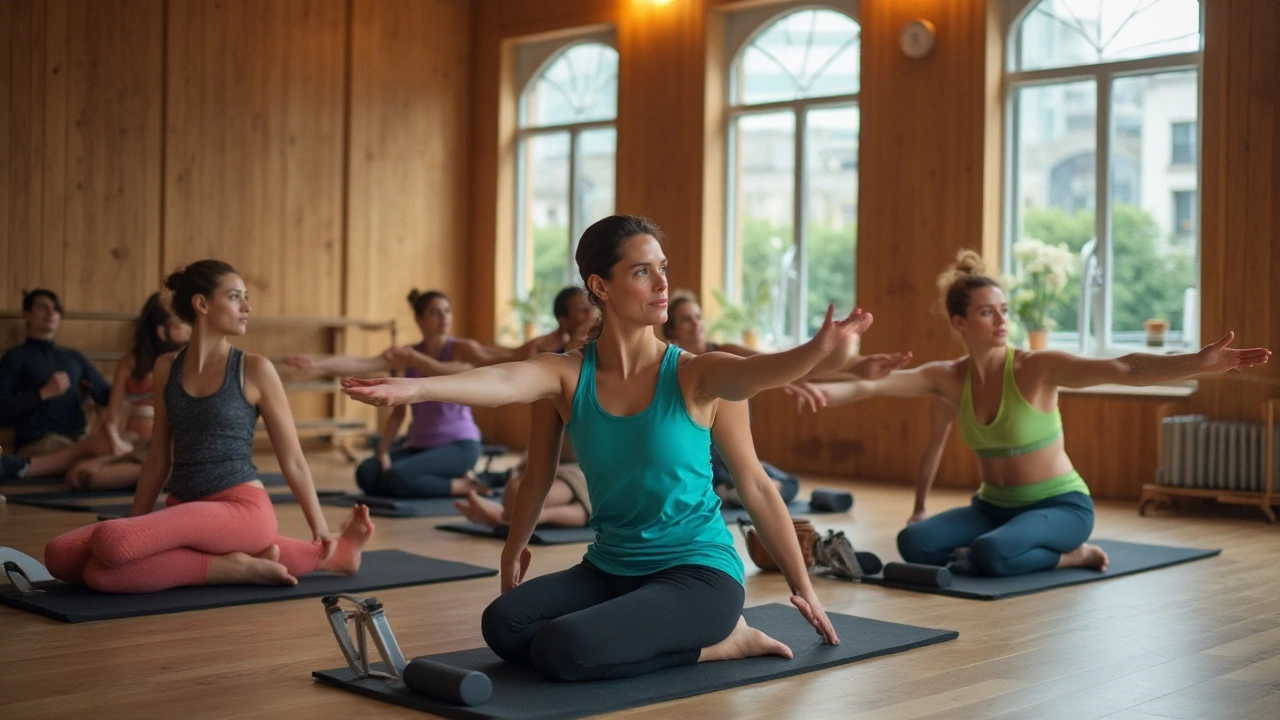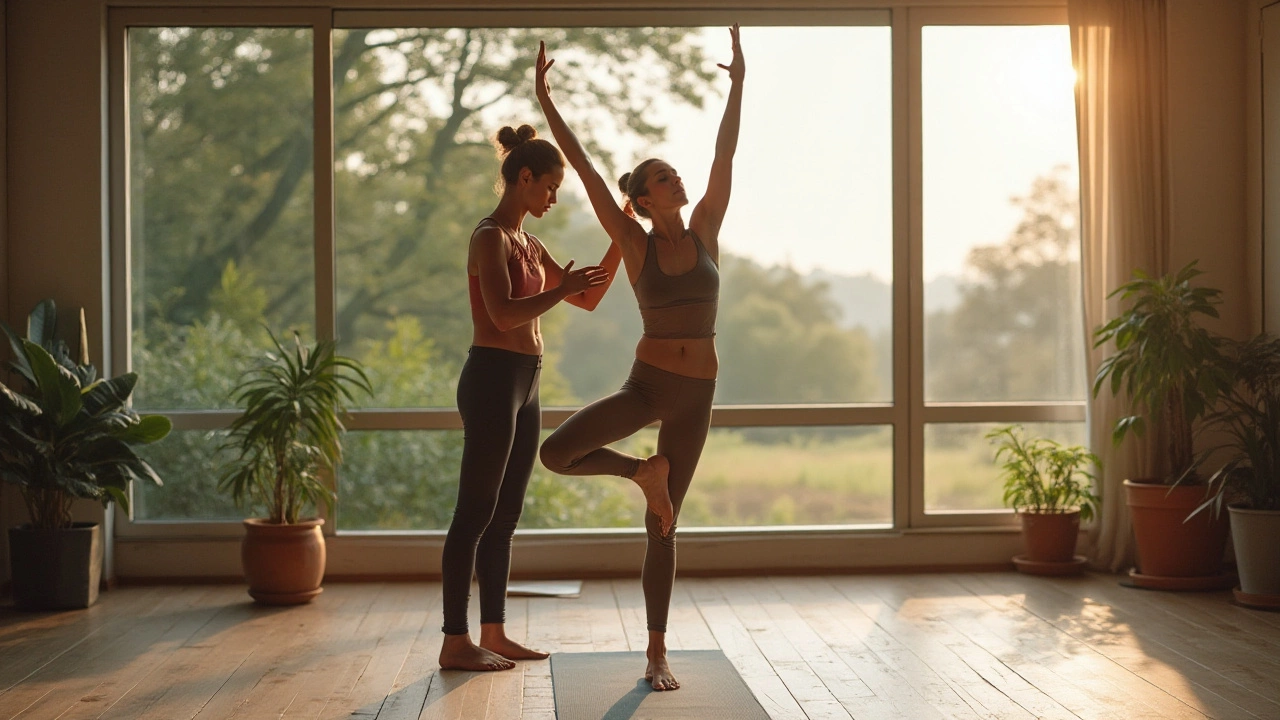Pilates Basics: Build Strength, Flexibility, and Balance
Ever wonder why Pilates shows up in so many fitness conversations? It’s because Pilates targets the core, improves posture, and adds a low‑impact boost to any workout plan. Whether you’re a yoga lover, a runner, or just looking for a fresh way to move, Pilates can fit right in. Below you’ll find simple tips to start, ways to combine it with other activities, and quick routines you can try at home.
Why Pilates Works for Everyone
Pilates isn’t just for elite athletes. The moves focus on controlled breathing and precise alignment, which means you can adjust the intensity to match your fitness level. If you’ve tried yoga and liked the mindfulness, you’ll feel right at home with Pilates’ focus on mind‑body connection. The core‑centric approach also supports better performance in cardio, strength training, and even daily chores.
Many of our readers ask if Pilates can replace cardio. The short answer: it complements cardio. While it may not burn as many calories as a HIIT session, Pilates boosts muscle endurance and metabolism, helping you get more from every jog or bike ride. Pair a 20‑minute Pilates flow with a 30‑minute run, and you’ll notice steadier energy and fewer aches.
Getting Started: Simple Pilates Moves for Beginners
Start with three foundational exercises: the Hundred, the Roll‑Up, and the Single‑Leg Stretch. The Hundred gets your heart rate up and awakens the core. The Roll‑Up stretches the spine and builds abdominal control. The Single‑Leg Stretch challenges stability while keeping the movement gentle on joints. Aim for two sets of each, focusing on breath and smooth transitions.
If you have a yoga mat, you’re set. No fancy equipment needed, though a small Pilates ball or resistance band can add variety. Spend 10 minutes a day for the first week, then gradually extend to 20‑minute sessions as you feel more confident. Consistency beats intensity when you’re building a new habit.
Looking for a quick routine? Try this 15‑minute flow: 2 minutes of the Hundred, 3 minutes of Roll‑Ups, 3 minutes of Single‑Leg Stretch, 4 minutes of Side‑Plank variations, and finish with 3 minutes of gentle spinal twists. The mix hits core, glutes, and hips—key areas that most of us ignore in regular cardio.
Remember, the goal isn’t perfection. Focus on quality of movement, keep your shoulders relaxed, and let your breath guide each action. Over time, you’ll notice better posture during desk work, more stability in yoga poses, and a stronger foundation for any sport you love.
Ready to explore more? Browse our Pilates‑tagged articles for deeper dives into specific workouts, how to blend Pilates with yoga sequences, and tips for tailoring routines to your fitness goals. Each post is written by experts who keep things practical and easy to follow.
Start small, stay consistent, and let Pilates become a natural part of your wellness routine. You’ll soon see the ripple effect across all areas of health—more energy, less back pain, and a steadier mind. Happy moving!

Can You Really Get Fit With Pilates? The Truth About Pilates Fitness Results
Maeve Larkspur Aug 5 0Is Pilates enough to get truly fit? Uncover real Pilates results, learn if it’s all you need, and pick up smarter fitness tips and facts about this popular workout.
More Detail
Can Pilates Help Shed Those Extra Pounds?
Maeve Larkspur Dec 25 0This article delves into the potential of Pilates as a weight loss tool. We'll explore how Pilates can be an effective workout for burning calories and strengthening muscles. Readers will learn about how Pilates might enhance body awareness and promote a healthier lifestyle. Discover if this low-impact exercise can fit into your weight loss journey, offering both physical and mental benefits. With practical tips and insights, this piece aims to provide clarity on Pilates’ role in achieving weight loss goals.
More Detail
Pilates vs Yoga: Which Practice Suits You Best?
Maeve Larkspur Nov 27 0Pilates and yoga are both popular forms of exercise that offer a range of physical and mental benefits. While both practices focus on developing strength and flexibility, they cater to different needs and fitness goals. This article explores the differences between Pilates and yoga, including their origins, benefits, and how each might suit various lifestyles and fitness preferences. Discover which practice might be best for you based on your personal health objectives and daily routine.
More Detail